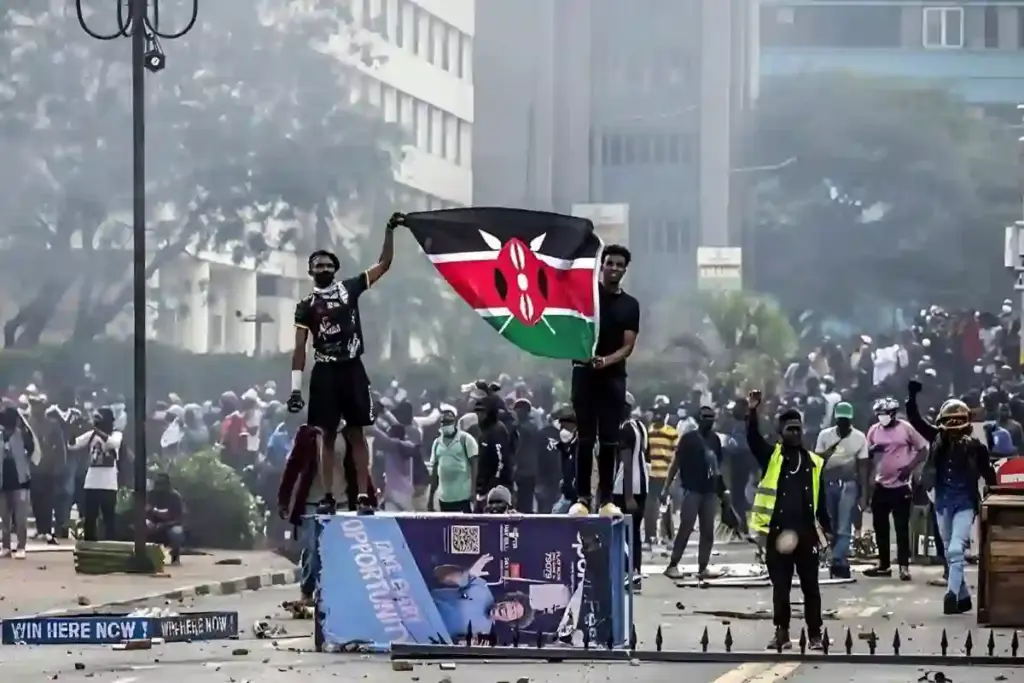What was meant to be a day of remembrance turned into a fierce standoff in Nairobi.
As Kenyans marked the 35th anniversary of Saba Saba Day—a historic turning point for democracy in the country—thousands took to the streets, demanding change.
But instead of peaceful commemoration, the day was marred by chaos, clashes, and heartbreak.
Protesters Hit the Streets as Ruto Faces Resignation Demands
July 7, known as Saba Saba Day (Swahili for “Seven Seven”), isn’t just another date on the calendar—it’s a symbol of resistance, honoring the 1990 pro-democracy movement that forced Kenya into multiparty politics.
But this year’s observance wasn’t just about history. Protesters in Nairobi made it clear they’re fed up with the present.
Chants of “Ruto Must Go” rang out as demonstrators accused President William Ruto of ignoring the people’s needs.
Frustration over economic conditions, police brutality, and political impunity spilled over into street protests.
Nairobi Locks Down as Police Clamp Down on Demonstrators
Anticipating unrest, Kenyan authorities went into full lockdown mode.
Police blocked major roads leading into Nairobi’s central business district and set up barricades with razor wire around key government buildings, including the president’s office and Parliament.
Shops closed early—or didn’t open at all. One major shopping mall even shut down completely.
The goal? Prevent large gatherings from forming in the heart of the city. But the people still showed up.
Tear Gas, Bonfires, and a Fatal Clash
What began as peaceful protest soon turned volatile on the city’s outskirts.
Protesters lit bonfires, hurled stones, and confronted officers head-on. In response, riot police deployed tear gas and water cannons to push back the crowds.
Tragically, reports confirmed at least one person died during the confrontation.
Local media also reported several injuries. Despite the heavy-handed crackdown, the calls for leadership change only grew louder.
Human Rights Groups Raise Alarms Over Escalating Violence
This isn’t the first time Kenya’s protests have ended in tragedy.
Just last month, between 8 and 16 people lost their lives in protests across the country, according to the Kenya National Commission for Human Rights.
Groups like Human Rights Watch are calling on the government to be held accountable for excessive force, injuries, and deaths.
Tensions were further inflamed on July 6 when armed thugs stormed a press conference held by the Kenya Human Rights Commission—an event meant to spotlight the growing threat to the right to protest.
Government Defends Actions, Calls Protests Dangerous
Interior Minister Kipchumba Murkomen took to social media to defend the government’s position, saying officials are committed to “protecting people and property.”
However, his comments haven’t gone down well with critics.
In fact, Murkomen previously described the June protests as “terrorism disguised as dissent.”
That language has only deepened the rift between authorities and civil society groups.
Anger Grows Over Blogger’s Death in Police Custody
Among the many cases fuelling public rage is the death of blogger Albert Ojwang in police custody last month.
His passing has become a rallying point for protesters demanding justice and police reform.
People are not just angry about taxes or politics—they’re demanding basic human rights and dignity.
And for many, this latest crackdown feels like a betrayal of everything Saba Saba stands for.
The Bigger Question: How Can Kenya Protect Peaceful Protest?
As Kenya continues to wrestle with unrest, the core issue remains: How can the country balance public safety and the right to protest?
More importantly, can it do so without turning every gathering into a battleground?

